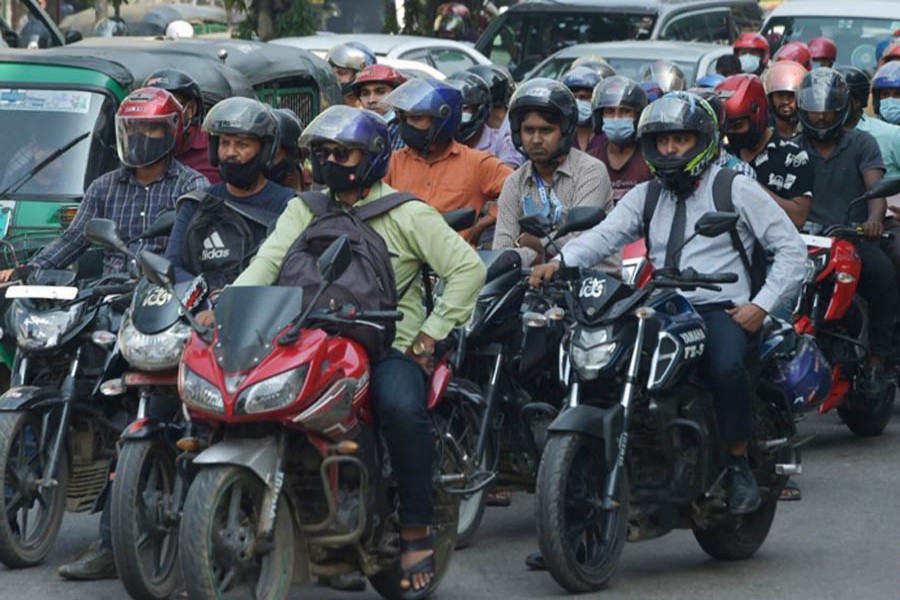The footpath is defined as a path for the pedestrians, those who are not in a vehicle, and rather use their foot instead.
Dhaka traffic has always been a clichéd topic, there is nothing new to talk about it. The lanes for buses, motor vehicles, rickshaws, and bikes, despite being defined, never existed in reality.
For them it was smudged in a way just like a group of school kids playing football, everyone, despite playing in different positions, was where the ball was.
However, over time, we got used to them rushing for the empty street without giving much thought about lanes. Gradually the limit extended to going the wrong way as well especially if the traffic police are looking the other way or if it is a less populous road.
Of course, the pedestrians had their fair share of contribution in that as well, by randomly trying to cross the road without even looking for traffic signs, or not using the foot over bridges. But even at the darkest times, the footpath stood alone in all its might, at least in Dhaka. This was a safe space for the pedestrians out there from the vehicles.
Yes, the narrow footpaths even became narrower with time as they had to share space as more and more hawkers and street shops and food carts started their expansion; nonetheless, it was at least safe to walk on the footpath.
During this time, the ride-sharing concept went into full swing and there was a boom in bikes. In a densely populated city of 2,24,78,116, which rose by 3.39 per cent from 2021, the commuting problems created a huge demand for ride-sharing companies. This was especially in the form of bikes, owing to less space taken and faster speed, which leads to less commuting time.
In 2021 alone, 3,75,252 motorcycles were registered with BRTA. But as it happens in Bangladesh, people cashed in on their greed to make fast cash. The number of unregistered motor-cycles shot up, caring little for the compliance and law, while asking even lesser fare than that of the ride-sharing apps or rickshaws per se, and thus, created a new market niche with sheer price differentiation.
This market positioned itself soon in the mind of the consumers and it subsequently expanded because when the war, the inflation, the price hikes, and other economic factors hit the general mass, people do not care for the macroeconomic effect, rather they go full individualistic which made this idea sustainable so far.
Now comes the dark side of the moon. This huge surge of motorbikes (a staggering fat share of 50.3 per cent of the total vehicles while the cars include only 17.7 per cent) saw 1168 people killed in 994 road crashes in 2021 only.
The middle name for motorbikes is reckless driving and little did they do to remove that infamy.
On the contrary, with time this reckless driving increased to the extent that they decided to make the innocent footpaths their own colony.
It started small, say only using the footpath to make a turn, or gain a few yards to get access to making a turn. As it went unpunished and unnoticed, it soon became the place to go for the wrong side, or parking in the middle of the footpath, totally blocking it.
In the next phase, at present, bikers have started to use the footpath as their road while hitting pedestrians, shouting at them, acting all entitled as if they own the footpath and by allowing the pedestrians to use some portion of it, they are doing the pedestrians a huge favour.
This reminds you of the story of the famous Aesop’s fable of the Tiger and the Crane (pedestrians being the crane). The question remains if the pros of having all these bikes are actually counterproductive when you consider all the cons stacked up against it.
Is there any end to it? Will the authority do anything substantial to ensure the safety of the footpath at least? Or do we have to believe in the utopia that maybe the moral codes of the bikers will hit them and they will stop?
Is that too much to ask from the real ‘kings’ of the Dhaka streets?
The writer is a finance and economics enthusiast, trying to break into the immensely interesting world of finance.


